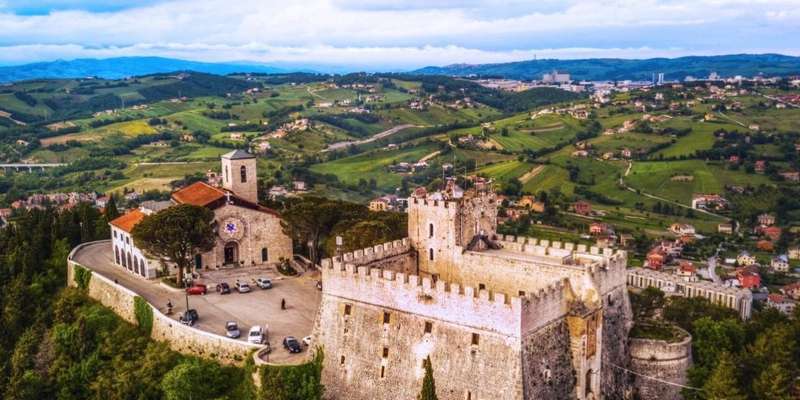- Home
- Useful Tips
- What to know before visiting...
Visiting Campobasso's Cathedral can be a highlight of your Molise trip, but many travelers arrive unprepared. Over 60% of visitors miss the cathedral's unique 18th-century frescoes because they don't know where to look, while others waste precious vacation time circling the historic center searching for the entrance. The frustration peaks during summer months when cruise ship day-trippers create unexpected crowds at what should be a peaceful spiritual site. Locals whisper about secret viewing spots for the best light on the marble facade, but this knowledge rarely reaches guidebooks. Understanding these challenges before you visit transforms your experience from frustrating to fulfilling, letting you appreciate Campobasso's crown jewel like an insider rather than a bewildered tourist.


Finding the hidden entrance to avoid tourist crowds
The cathedral's main entrance on Via Mazzini often gets congested with tour groups, especially between 11 AM and 2 PM. What most visitors don't realize is that the side entrance on Vico dei Longo remains virtually empty throughout the day. This 17th-century arched doorway leads directly to the north transept, putting you face-to-face with Nicola da Monteforte's stunning 'Madonna della Libera' altarpiece before the crowds arrive. Early risers have an added advantage - the sacristan usually opens the doors at 7:30 AM for local worshippers, and they'll often let respectful visitors enter early. If you do find yourself stuck in line, notice how the morning sun illuminates the rose window's stained glass from this angle - a spectacle most hurried tourists completely miss as they rush toward the main altar.
Decoding the cathedral's architectural timeline in one visit
Campobasso Cathedral presents a fascinating puzzle - its exterior appears uniformly neoclassical, but the interior spans six centuries of artistic styles. Start your exploration at the 14th-century crypt (often overlooked beneath the main altar) where the original medieval foundations are visible. The baroque chapels along the north aisle showcase gilded stucco work from the 1600s, while the dome's 1803 reconstruction becomes evident when you spot the subtle color variation in the marble columns. Local art historians recommend focusing on three key details: the Byzantine-style icon above the sacristy door, the Renaissance-era choir stalls with their intricate wood carvings, and the surprisingly modern abstract stained glass added after WWII bomb damage. This layered approach helps you appreciate how the cathedral evolved alongside Campobasso itself without needing specialized knowledge.
When silence speaks volumes - experiencing the cathedral's atmosphere
The true magic of Campobasso Cathedral reveals itself in the quiet moments between tour groups. Visit on Tuesday or Thursday mornings when fewer organized tours operate, and you might hear the cathedral's 19th-century organ being tuned - an ethereal sound that echoes through the nave. Locals know that 3 PM brings perfect light through the apse windows, casting rainbow patterns on the marble floor. If you're fortunate enough to visit during one of the cathedral's occasional Gregorian chant performances (announced only on handwritten notices by the door), you'll understand why this space was designed for acoustic perfection. Remember to look down occasionally - the floor contains memorial stones from Campobasso's noble families, each telling a story about the city's history that most visitors walk right over.
Beyond the cathedral - pairing your visit with hidden neighborhood gems
Smart travelers extend their cathedral visit by exploring the surrounding Monte district, where generations of clergy and artisans have lived. Just 50 meters west of the cathedral, Antico Caffè San Leonardo has served almond milk coffee to churchgoers since 1887 - their secret recipe pairs perfectly with sfogliatelle from Panificio Di Nucci across the square. Walk downhill along Via Chiarizia to discover workshops where craftsmen still create religious vestments using techniques from the 1700s. Time your return to pass by the cathedral around sunset, when the warm light transforms its facade into a golden masterpiece - a view best enjoyed from the little-known vantage point at Giardino dei Cannoni, where locals bring their evening aperitivo.
